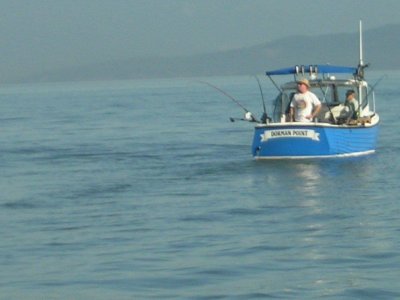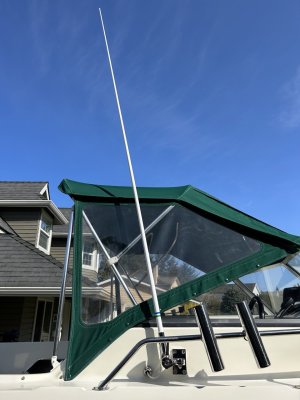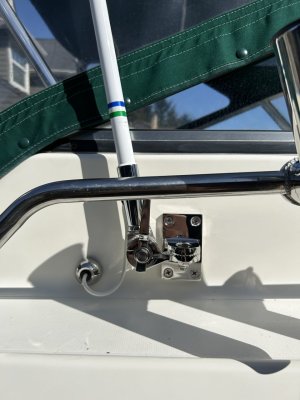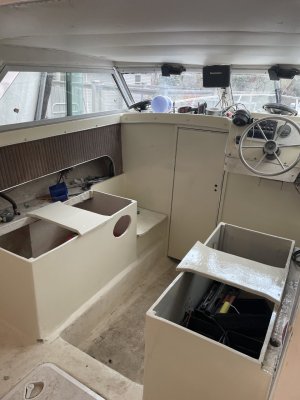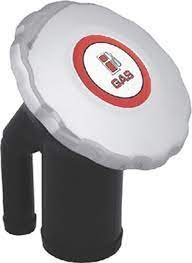Foxsea
Well-Known Member
It takes a while. Have all your heavy load jackstands, keel stands, mud sills and pads, air compressor and air jack ready to go. Drop the reach on your trailer as low as possible, without dragging the tongue jack. Put the two jack stands under the transom.What’s the trick to getting it off the trailer? The process?
Use the 3 ton air jack to raise the bow of the boat ahead of the front cross-member. Set a keel stand under the keel behind the cross member with a thick, 8" long crush pad (glue 2 layers of 3/4" plywood together) between the two. Lower and remove the air jack and pull the trailer forward until the first axle touches the keel stand. Use redundancy with the keel stands. Do not rely on the air jack without a stand in place. Stay below the trailer axles and watch yourself!
Reposition the air jack. Put a second keel stand behind the first axle. Lift enough to install the second keel stand, using a pad to distribute stress. Remove the first one and lower onto the second keel stand. Move the trailer forward, as before. At this point you can place a second pair of outer jack stands to support and stabilize the hull. Position those where "Sling" is indicated on the hull. Use pads to cushion your hull and avoid creating hard points. Wash, rinse repeat.
Take your time and be safe. Use adequate equipment. My keel stands are 6 ton, the jack stands are 3 ton. Do not go below the boat unless you are entirely confident that the hull is well supported and braced. I like the air jack because I do not need to be below the boat to operate it - 2 remote valves. My boat has a tri-axle trailer, so it takes more time .
To load the boat back on the trailer, follow the same procedure, in reverse. Be very cautious moving the trailer. If you have help, it's safer to move it manually. This entire process goes better and quicker with some help.
Last edited:


